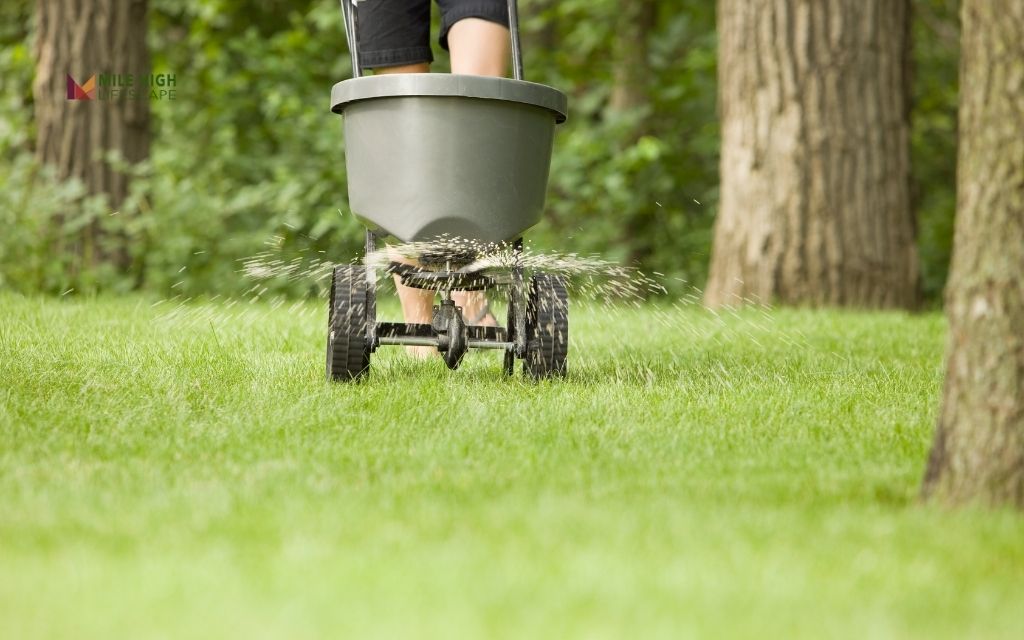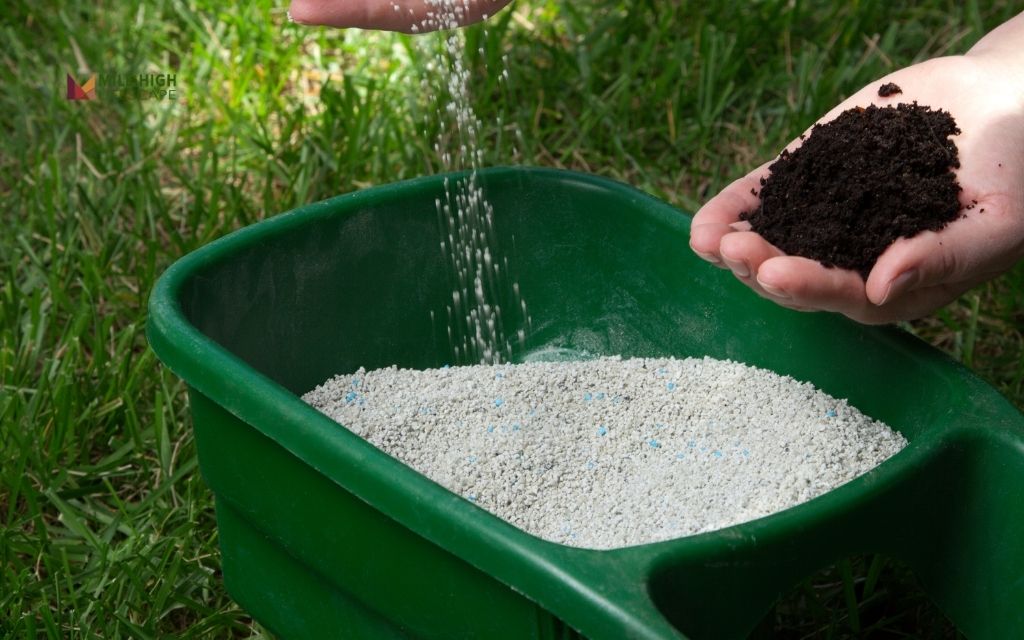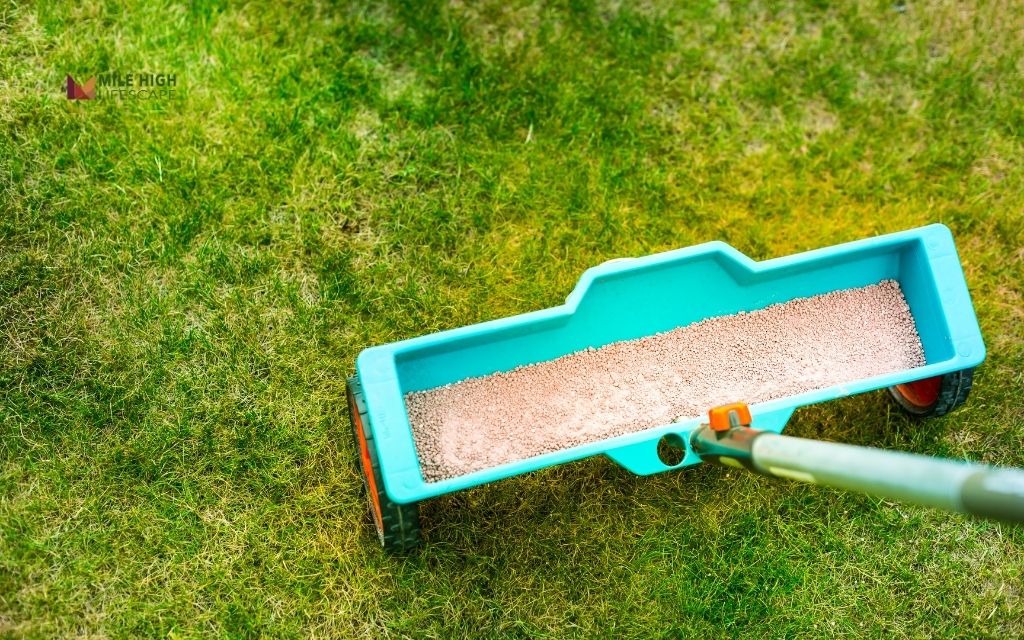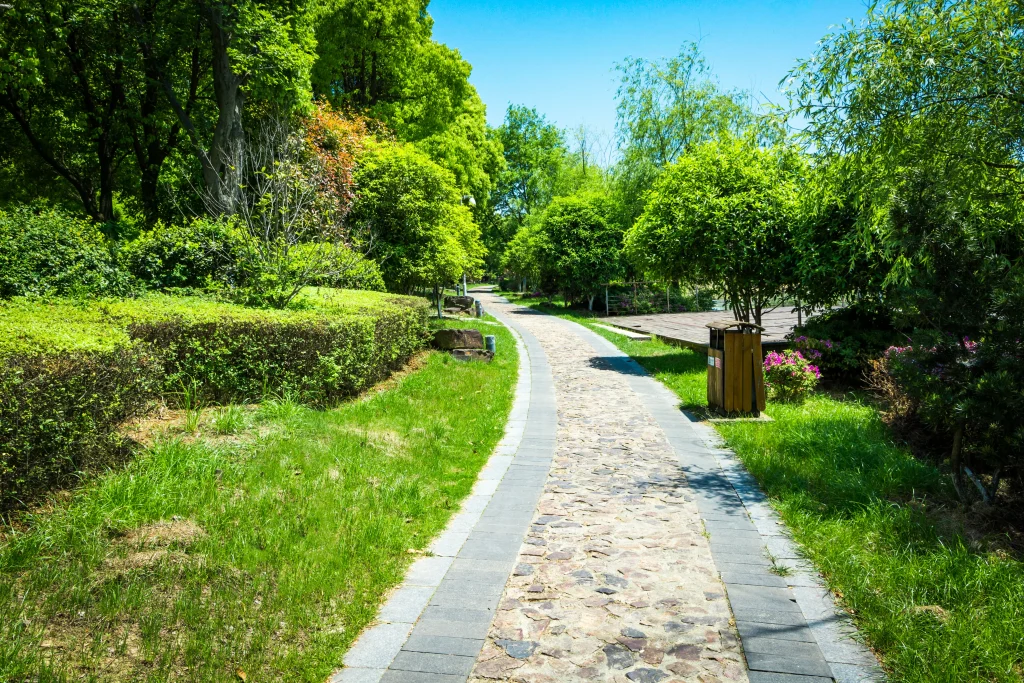As autumn temperatures begin their descent, homeowners often mistakenly believe their lawn care duties are finished. The reality tells a different story. Fall represents the most crucial period for lawn maintenance, and choosing proper fertilizer during this season determines whether your grass emerges strong and vibrant or struggles through spring recovery.
Understanding what fertilizer to use in fall, combined with precise timing and application methods, establishes your lawn’s foundation for surviving winter’s harsh conditions and thriving in the upcoming growing season.

What fertilizer to use in fall?
Fall fertilizers operate differently than their spring counterparts. While spring formulations focus on rapid leaf development, autumn fertilizers concentrate on root strengthening and winter preparation. This fundamental difference shapes your fertilizer selection strategy.
Slow-release nitrogen fertilizers
Slow-release nitrogen formulations provide your lawn’s best feeding option during fall months. These fertilizers deliver nutrients gradually across weeks or months, eliminating waste while supplying consistent nourishment as temperatures decline. The controlled release prevents excessive leaf growth that frost could damage.
Professional landscapers recommend slow-release formulations because they match grass plants’ natural nutrient uptake patterns during fall’s transition period.
High-potassium winterizer formulas
Winterizer fertilizers contain elevated potassium levels that help grass survive winter stress conditions. Potassium strengthens root systems while improving resistance to cold temperatures, drought periods, and disease pressure. Examine fertilizer packages for higher K values in the N-P-K ratio.
Research demonstrates that lawns receiving adequate potassium during fall show significantly better winter survival rates and earlier spring recovery compared to those without proper potassium nutrition.
Balanced blend options
New grass seeding projects require balanced fertilizer formulations that nourish both existing turf and emerging seedlings. These products provide gentle, consistent nutrition without overwhelming delicate root systems developing from recent seeding efforts.
Organic versus synthetic considerations
Organic fertilizers improve soil health while working gradually through natural decomposition processes. However, they require earlier application timing since nutrient release depends on soil temperature and microbial activity.
Synthetic fertilizers deliver immediate nutrient availability with precise ratios but demand careful timing to prevent runoff during heavy rainfall periods.
Mile High Lifescape’s experienced team has observed that combining both approaches often produces superior results for Denver Metro area lawns.
When to apply fall fertilizer
The optimal application window falls 4-6 weeks before your region’s first expected frost date. This timing allows grass plants to absorb and utilize nutrients while maintaining active growth processes.
Regional timing guidelines
Northern states: Late September through early October Southern states: October through November
Local frost dates vary significantly, so consult weather services and count backward 4-6 weeks for your specific location’s ideal timing.
Why timing matters critically
Grass requires adequate time to absorb nutrients during active growth periods. Early application encourages summer growth that wastes plant energy reserves. Late application prevents nutrient utilization before dormancy begins.
Temperature consistency matters more than calendar dates. Watch for sustained nighttime temperatures dropping below 50°F as your application signal.
Special consideration for overseeding
Overseeding projects require modified fertilizer timing:
- Complete seeding first
- Wait 2-3 weeks after germination
- Apply fertilizer when new grass reaches approximately one inch height
This sequence ensures seedlings develop sufficient strength to handle fertilizer without experiencing burning or stunted growth.
How to choose the right fall fertilizer for your lawn
Grass type determines fertilizer selection more than any other factor. Warm-season and cool-season varieties exhibit distinctly different nutritional requirements and timing needs.
Warm-season grass requirements
Bermudagrass, Zoysia, St. Augustine, and Centipede grasses require high-potassium winterizer formulations applied during early fall periods. These species begin dormancy preparation earlier than cool-season varieties, making early September the optimal application window across most regions.
High potassium content helps warm-season grasses develop cold tolerance while maintaining root health during extended dormancy periods. Avoid late-season nitrogen applications that stimulate growth when these grasses should harden for winter conditions.
Cool-season grass needs
Fescue, Kentucky Bluegrass, Ryegrass, and Bentgrass benefit from balanced fertilizers or slow-release nitrogen formulations enhanced with potassium. These grasses continue active growth longer into fall, making mid-fall applications ideal for supporting continued root development and winter preparation.
Cool-season grasses in Colorado’s climate zone particularly benefit from October applications that coincide with natural root growth periods.

Why fall fertilizing is essential
Fall feeding serves multiple functions that directly impact your lawn’s long-term health and visual appeal throughout the following year.
Root system development
Moderate fall temperatures combined with increased moisture create ideal conditions for root development. Grass plants naturally shift energy from leaf production to root expansion during this period.
Proper fertilization supports extensive root growth, creating robust foundations that improve nutrient and water uptake capacity. Enhanced root systems provide superior drought tolerance and overall plant health that becomes evident during stressful growing periods.
Summer stress recovery
Summer heat, drought conditions, and foot traffic leave lawns depleted and weakened. Fall fertilization provides nutritional support needed for recovery, helping grass rebuild energy reserves while repairing accumulated damage from challenging summer months.
Denver’s intense summer sun and periodic drought conditions make fall recovery feeding particularly important for local lawns.
Winter hardening process support
Appropriate fall nutrition supports natural winter hardening processes, helping grass develop physiological changes needed for surviving freezing temperatures. Enhanced carbohydrate storage, improved cell wall strength, and increased cold tolerance all result from proper fall feeding programs.
Spring color and vigor enhancement
Lawns receiving adequate fall nutrition consistently demonstrate superior spring green-up, earlier growth resumption, and better overall vigor. Nutrients stored during fall feeding provide energy needed for rapid spring growth and vibrant color development.
How to apply fertilizer in fall
Proper application technique equals fertilizer selection in importance, ensuring even distribution and optimal nutrient uptake while preventing waste and environmental impact.
Step 1: Prepare your lawn properly
Begin with thorough lawn preparation to maximize fertilizer effectiveness. Mow grass slightly shorter than usual – approximately one-quarter to one-third shorter – improving soil contact while reducing interference with granule distribution.
Remove all debris including fallen leaves, thatch buildup, and materials that could prevent even application. Light watering 24 hours before application ensures adequate soil moisture without creating overly wet conditions that interfere with spreader operation.
Step 2: Select appropriate spreader equipment
Choose spreader types based on lawn size and configuration. Broadcast spreaders work effectively for large, open areas, providing wide coverage patterns and efficient application rates.
Drop spreaders offer precise control for smaller areas, tight spaces, or situations requiring exact placement control. Always consult fertilizer packages for recommended spreader settings, as different products require different application rates.
Calibrate spreaders according to manufacturer instructions to ensure accurate application rates that match product specifications.
Step 3: Apply using crisscross pattern
Employ the crisscross application method for optimal coverage uniformity. Make your first pass in one direction, then create a second pass perpendicular to the first direction.
This technique ensures even distribution while preventing striping or burn patches that result from uneven application. Overlap slightly between passes to eliminate gaps, but avoid excessive overlap that could cause over-application and potential burning.
Step 4: Activate with proper watering
Light watering following application activates granular fertilizers and begins nutrient release processes. Apply approximately one-quarter inch of water – sufficient to dissolve granules and move nutrients toward root zones without causing runoff or leaching.
Step 5: Complete safety and cleanup procedures
Sweep fertilizer granules from hard surfaces including driveways, sidewalks, and patios back onto lawn areas or collect for proper disposal. These areas become nutrient runoff sources during rain events.
Wash hands thoroughly after handling fertilizer products and clean application equipment to prevent corrosion while ensuring accurate future applications. Store unused fertilizer in cool, dry locations away from children and pets.

Professional recommendations for Denver area lawns
For nearly two decades, Mile High Lifescape has observed specific patterns in Denver Metro area lawn care success. Our experience serving homeowners from Littleton to Longmont reveals that fall fertilization timing often determines spring lawn quality more than any other single factor.
Colorado’s unique climate conditions—including rapid temperature changes and periodic late-season warm spells—require careful attention to application timing and product selection. We recommend monitoring soil temperature rather than relying solely on calendar dates for optimal results.
Conclusion
Selecting appropriate fall fertilizer and applying it with proper timing and technique creates the foundation for outstanding lawn health through winter months and into the following growing season. The investment in appropriate fall fertilization pays dividends through improved winter survival, enhanced spring green-up, and overall lawn resilience against seasonal stress conditions.
Take action this fall to provide your lawn the nutrition it deserves. Your spring lawn will reflect the care and attention you provide during these crucial autumn months.
For additional proven lawn care methods and maintenance schedules, explore our comprehensive resources where expert recommendations help you develop the healthy, stunning lawn you envision.
Frequently asked questions (FAQs)
Should I fertilize after overseeding in the fall?
Yes, fertilizing after overseeding supports both established turf and new seedlings. Use gentle starter fertilizer or balanced formulation once new grass begins growing, typically when seedlings reach approximately one inch height. This ensures adequate nutrition without overwhelming delicate new roots.
When exactly should I apply fall fertilizer?
Apply fall fertilizer 4-6 weeks before your region’s first expected frost date. This typically means late September through early October in northern climates and October through November in southern regions. Check local weather forecasts and historical frost dates for precise timing in your area.
How do I avoid over-fertilizing my lawn?
Prevent over-fertilization by using correct spreader settings according to package directions, applying fertilizer in two perpendicular directions for even coverage, and strictly following recommended application rates. Never exceed package-recommended rates, as excess fertilizer can damage grass and contaminate water sources.
Can I use spring fertilizer in fall?
No, spring fertilizers contain high nitrogen content designed to promote rapid leaf growth, which proves counterproductive during fall months. Fall fertilizers emphasize potassium and controlled-release nitrogen for optimal seasonal benefits that prepare grass for winter survival.
